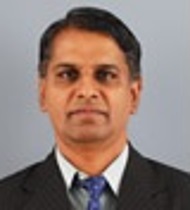Interior corridors of research innovation – Part 1
Interior corridors of research innovation – Part 1
Research is an art of discovering the undiscovered. It is mostly done as an advance study to understand the study topic with the knowledge of the basic concepts.
The term “Research” is fascinating to many, for the simple reason it is done by very few and it enables to earn the highest academic degree. The diverse branches of study in any field offer challenging problems to solve. These problems can be taken for research, in fact, these are called a statement of the problem. Before starting the research activity, the research scholar is advised to do a literature survey. Literature survey is the scholar gathering all the published work on a topic of his interest, for at least a period of 10 years. This empowers the scholar to know what is the status of the problem as on date and also he can identify the gaps which are not studied/investigated by any so far.
Prerequisites for research
There are a few prerequisites for research.
1) The first one is a passion for understanding the concepts at the atomic level. If this is missing, the research scholar will not understand what he is doing and why he is doing.
2) Basic knowledge of the topic selected for research. Usually a post-graduate degree (Master`s) facilitates research admission. At times even with a Bachelor’s degree one can proceed to do research.
3) Able to allocate enough time in his carrier for research. Usually, research scholar has to spend at least 2 years minimum for completing the doctoral process.
4) Ability to listen, read and comprehend things related to his research work.
5) Being honest, creative will be however counted on.
Types of research
Broadly the research is classified into two categories. One branch is experimental research while the other branch is theoretical research. In experimental research, scholars perform various experiments using sophisticated instruments and elicit data. In fact, live data is also considered in the case of life sciences research. The data should be reproducible and errors should be identified. Error analysis is a big subject which talks about how to eliminate/minimize error in various experiments. First, the scholar should know the principle of each instrument is using. The art of taking data coupled with interpretation of results makes the scholar a perfect scientist. Most of the instruments in the present era are digitized. The data will be the form of 0 and 1 and it will be stored in a computer. There are techniques in collecting data. For example, an average mode will allow collecting data in the time frame and the data thus obtained is the average of the readings in that time frame. The scholar must know in what fashion the data is required. At times, the data that comes out at a very high speed is needed, an example is the weather data from a satellite to a ground station. In some instances, the data flow is very slow, an example is a growth of bacteria under a microscope in a stipulated time. The scholar should thus decide the choice of recording the data depending on his experimentation. Thus in experimental research emphasis is more on various techniques, different instruments and the data recording methods.
Theoretical research is more abstract. Soft-ware packages are mostly used to create modelling. These packages when inputted with the required data will calculate and fix the parameters as desired. An example is the ball and stick model of a molecular structure. Gaussian software is very popular. When the scholar inputs all the given data like atoms, bond types, bond lengths etc., the package will run and ultimately arrives at a molecular structure which consumes least energy configuration. From this data, the scholar can identify the exact atomic positions and can interpret many things for example the steric hindrances faced by the atoms. Theoretical research is extremely useful when the objects of study are not readily available. For example, the motion of a ball on the surface of the Moon is a classic example. Yet another example is the estimation of the rise of Coronavirus in India through various models.
Conclusion:
Definition of research is discussed. Types of research namely experimental and theoretical are also deliberated. Examples, in either case, are discussed in threadbare.
image source
- Nematic texture: Madhu Mohan
